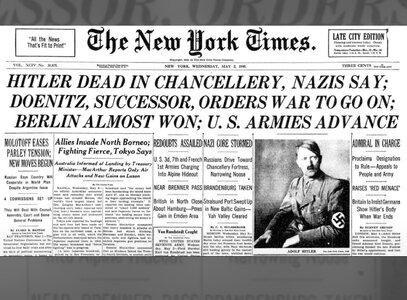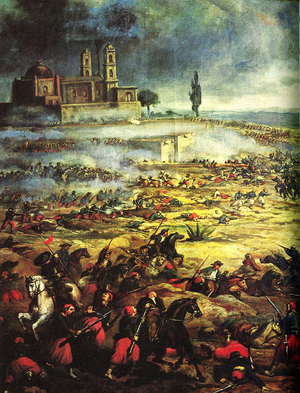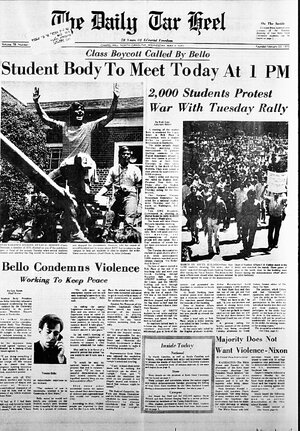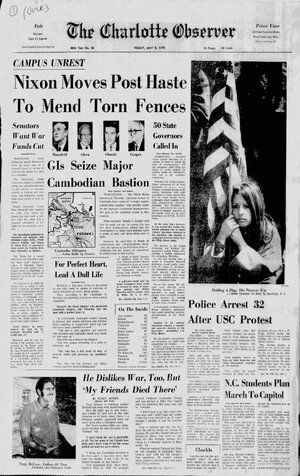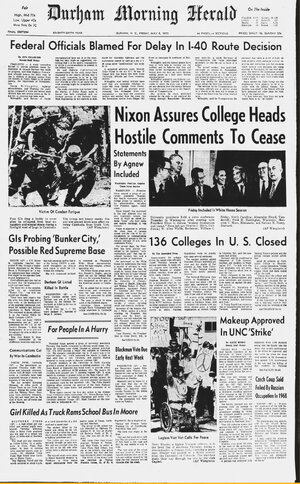- Messages
- 1,161
Link: Clara Immerwahr - Wikipedia.
On this day, May 2, 1915, Clara Immerwahr committed suicide. Clara Immerwahr was one of the first women in Germany to be awarded a PhD in chemistry. Shortly thereafter, she married Fritz Haber (after converting from Judaism to Christianity) and largely submerged her career to advance his. Fritz Haber was the co-inventor of the Haber-Bosch process, along with Carl Bosch (nephew of the Bosch of spark-plug fame.) Fritz invented the lab version of the Haber-Bosch process and Carl invented the industrial Haber-Bosch process. Both were awarded Nobel Prizes for their work on the Haber-Bosch process. Fritz, a Jew who converted to Christianity, invented many of the poison gases Germany used in WW1. On the evening after the first use of a poison gas that Fritz had invented, his wife Clara committed suicide. It is widely believed this suicide was to protest what her husband had done and her inability to continue to be the wife of someone who would do such a thing. Among the poison gases that Fritz invented was Zyklon A, which was later "improved" by the Nazis to Zyklon B (hydrogen cyanide). Zyklon B was among the gases used by the Nazis to exterminate the Jews who Fritz had attempted to separate himself from early in his professional career. Notwithstanding Fritz' contributions to Germany society and his conversation to Christianity, he had to flee Germany upon the rise of Hitler to power.
Fritz and Carl played very different roles during the negotiations of the terms of surrender Germany would have to comply with after WW1. Fritz was part of the official negotiation team, and his main contribution was to insist that all German reparations must be paid for in gold. Fritz had confidently and confidentially informed his fellow negotiators that he was on the verge of inventing a process to extract gold from seawater and that soon Germany would have plenty of gold to pay off even the most ridiculous reparation demands. Fritz never invented a feasible means of extracting gold from seawater. Carl on the other hand was a member of an unofficial team of negotiators. One of the main Allied strategies in WW1 was to blockade German ports to prevent Germany from importing the nitrates essential to making explosives and fertilizers. The British Admiralty confidently predicted that with such a blockade in place, Germany would run out of explosives and/or food in six months. However, before WW1 even started, Carl had industrialized the process of making ammonia from air. With ammonia on hand, the only limits on how much explosives and fertilizer Germany could make was the production capacity of the plant at Oppau, finished in 1913, and how much nitrogen was in the atmosphere. That plant at Oppau kept Germany in WW1.
Among the prime objectives of the WW1 allies was to capture the Oppau plant, intact. The WW1 Allies succeeded in their objective. But the best scientific minds of the Allied powers could not figure out how Oppau worked. Carl, as a member of the unofficial negotiating team, agreed to disclose how plant at Oppau industrialized the Haber-Bosch process. And what tiny concessions Germany got in Paris Conference were due to Carl 's promises about the industrial Haber-Bosch process. Over half the nitrogen in your body was created in the Haber-Bosch process. Over half the world's population would not exist without the food created by the fertilizers derived from the nitrogen extracted from air by the Haber-Bosch process.
Clara Immerwahr Haber committed suicide on this day in 1915 when her husband took the final step of overseeing the deployment of poison gases that he had invented. In the 1930's, Fritz Haber had to flee Germany to avoid being sent to a concentration camp and, maybe, killed with Zyklon B gas, for the sin of having been born a Jew. Fritz died in 1934 in Basel while in route to Palestine to become the director of what is now known at the Weizmann Institute in Rehovot in what would later become Israel. Carl Bosch founded IG Farben, once the world's largest chemical company, but during the 1930's he was forced out of the company because of his criticism of Hitler. Carl died on April 26, 1940, partially due to alcoholism that got worse in proportion to Hitler's rise to power.
A recounting of the Haber-Bosch process is titled, "Alchemy of the Air" by Thomas Hager, published in 2008. The title of the book is, I believe, a dig at Haber's delusional attempts to extract gold from seawater, when all the while the real treasure was fertilizer extracted from air.
My first employer after graduating from college was the Tennessee Valley Authority. In large part the TVA was created to build dams on the Tennessee River and its tributaries, to generate electricity, to power the Haber-Bosch process plants that were built to make the nitrogen needed to make explosives and fertilizers. A side "benefit" of all those dams generating electricity was the locating of the Oak Ridge plant that separated out the uranium needed to make the atomic bombs of WW2. And the worst act of domestic terrorism in the history of United States was the Oklahoma City bombing of 1995, made possible by ammonium nitrate fertilizer produced by, . . ., the Haber-Bosch Process.
On this day, May 2, 1915, Clara Immerwahr committed suicide. Clara Immerwahr was one of the first women in Germany to be awarded a PhD in chemistry. Shortly thereafter, she married Fritz Haber (after converting from Judaism to Christianity) and largely submerged her career to advance his. Fritz Haber was the co-inventor of the Haber-Bosch process, along with Carl Bosch (nephew of the Bosch of spark-plug fame.) Fritz invented the lab version of the Haber-Bosch process and Carl invented the industrial Haber-Bosch process. Both were awarded Nobel Prizes for their work on the Haber-Bosch process. Fritz, a Jew who converted to Christianity, invented many of the poison gases Germany used in WW1. On the evening after the first use of a poison gas that Fritz had invented, his wife Clara committed suicide. It is widely believed this suicide was to protest what her husband had done and her inability to continue to be the wife of someone who would do such a thing. Among the poison gases that Fritz invented was Zyklon A, which was later "improved" by the Nazis to Zyklon B (hydrogen cyanide). Zyklon B was among the gases used by the Nazis to exterminate the Jews who Fritz had attempted to separate himself from early in his professional career. Notwithstanding Fritz' contributions to Germany society and his conversation to Christianity, he had to flee Germany upon the rise of Hitler to power.
Fritz and Carl played very different roles during the negotiations of the terms of surrender Germany would have to comply with after WW1. Fritz was part of the official negotiation team, and his main contribution was to insist that all German reparations must be paid for in gold. Fritz had confidently and confidentially informed his fellow negotiators that he was on the verge of inventing a process to extract gold from seawater and that soon Germany would have plenty of gold to pay off even the most ridiculous reparation demands. Fritz never invented a feasible means of extracting gold from seawater. Carl on the other hand was a member of an unofficial team of negotiators. One of the main Allied strategies in WW1 was to blockade German ports to prevent Germany from importing the nitrates essential to making explosives and fertilizers. The British Admiralty confidently predicted that with such a blockade in place, Germany would run out of explosives and/or food in six months. However, before WW1 even started, Carl had industrialized the process of making ammonia from air. With ammonia on hand, the only limits on how much explosives and fertilizer Germany could make was the production capacity of the plant at Oppau, finished in 1913, and how much nitrogen was in the atmosphere. That plant at Oppau kept Germany in WW1.
Among the prime objectives of the WW1 allies was to capture the Oppau plant, intact. The WW1 Allies succeeded in their objective. But the best scientific minds of the Allied powers could not figure out how Oppau worked. Carl, as a member of the unofficial negotiating team, agreed to disclose how plant at Oppau industrialized the Haber-Bosch process. And what tiny concessions Germany got in Paris Conference were due to Carl 's promises about the industrial Haber-Bosch process. Over half the nitrogen in your body was created in the Haber-Bosch process. Over half the world's population would not exist without the food created by the fertilizers derived from the nitrogen extracted from air by the Haber-Bosch process.
Clara Immerwahr Haber committed suicide on this day in 1915 when her husband took the final step of overseeing the deployment of poison gases that he had invented. In the 1930's, Fritz Haber had to flee Germany to avoid being sent to a concentration camp and, maybe, killed with Zyklon B gas, for the sin of having been born a Jew. Fritz died in 1934 in Basel while in route to Palestine to become the director of what is now known at the Weizmann Institute in Rehovot in what would later become Israel. Carl Bosch founded IG Farben, once the world's largest chemical company, but during the 1930's he was forced out of the company because of his criticism of Hitler. Carl died on April 26, 1940, partially due to alcoholism that got worse in proportion to Hitler's rise to power.
A recounting of the Haber-Bosch process is titled, "Alchemy of the Air" by Thomas Hager, published in 2008. The title of the book is, I believe, a dig at Haber's delusional attempts to extract gold from seawater, when all the while the real treasure was fertilizer extracted from air.
My first employer after graduating from college was the Tennessee Valley Authority. In large part the TVA was created to build dams on the Tennessee River and its tributaries, to generate electricity, to power the Haber-Bosch process plants that were built to make the nitrogen needed to make explosives and fertilizers. A side "benefit" of all those dams generating electricity was the locating of the Oak Ridge plant that separated out the uranium needed to make the atomic bombs of WW2. And the worst act of domestic terrorism in the history of United States was the Oklahoma City bombing of 1995, made possible by ammonium nitrate fertilizer produced by, . . ., the Haber-Bosch Process.
Last edited:

